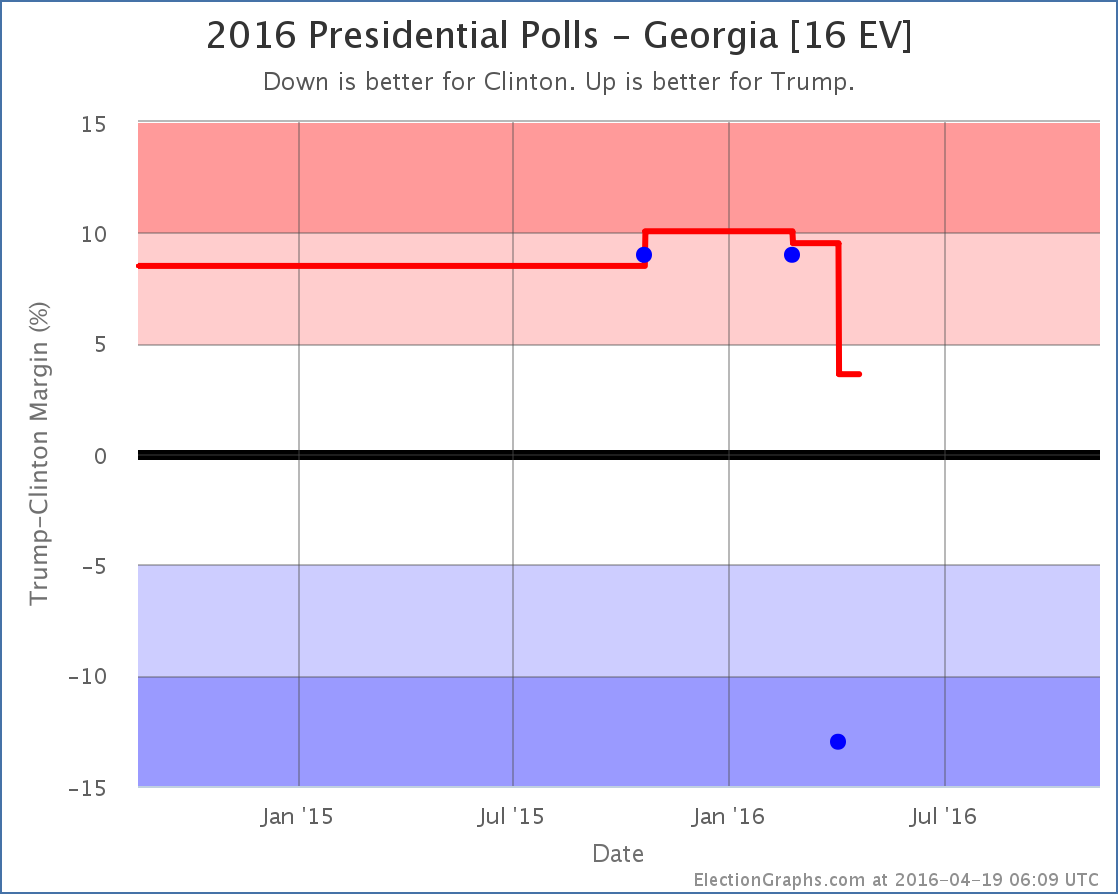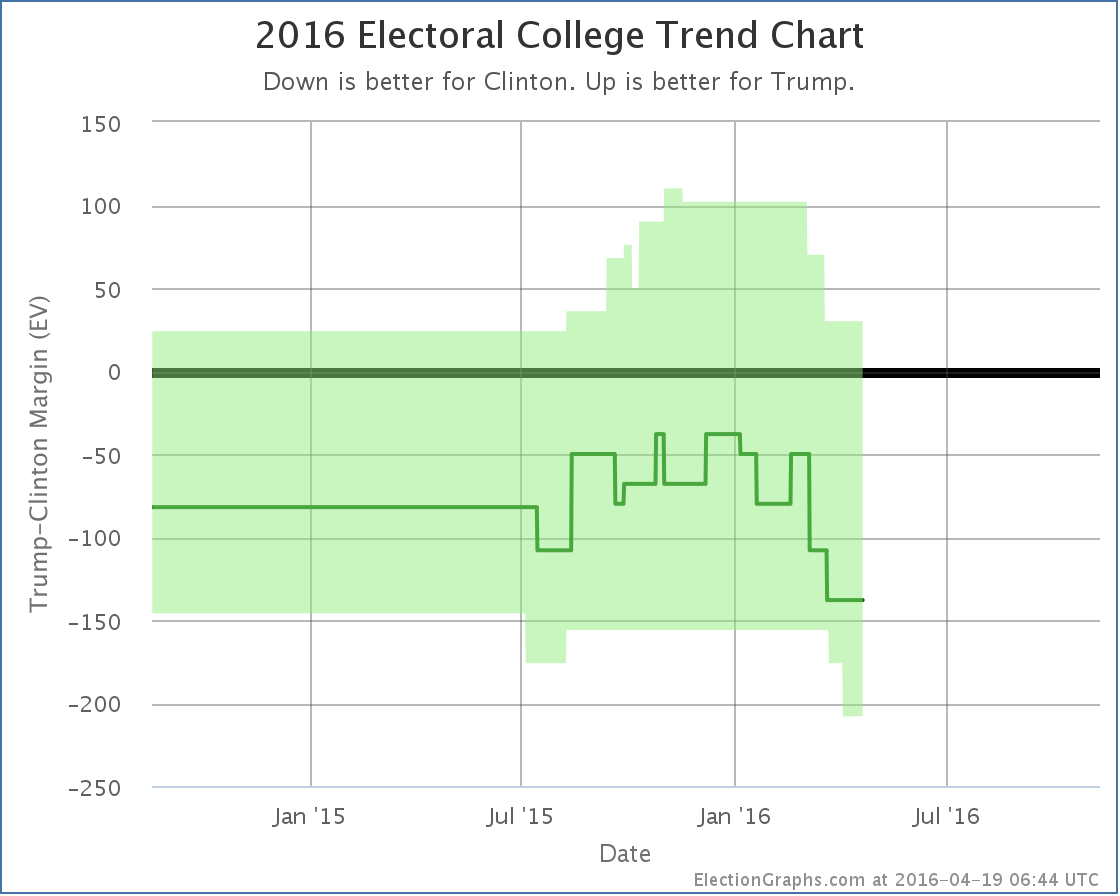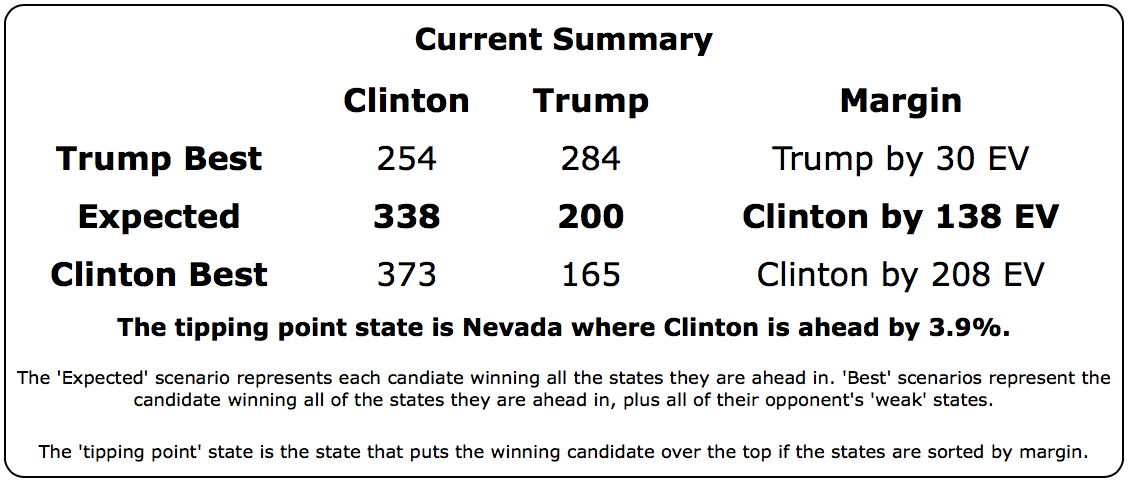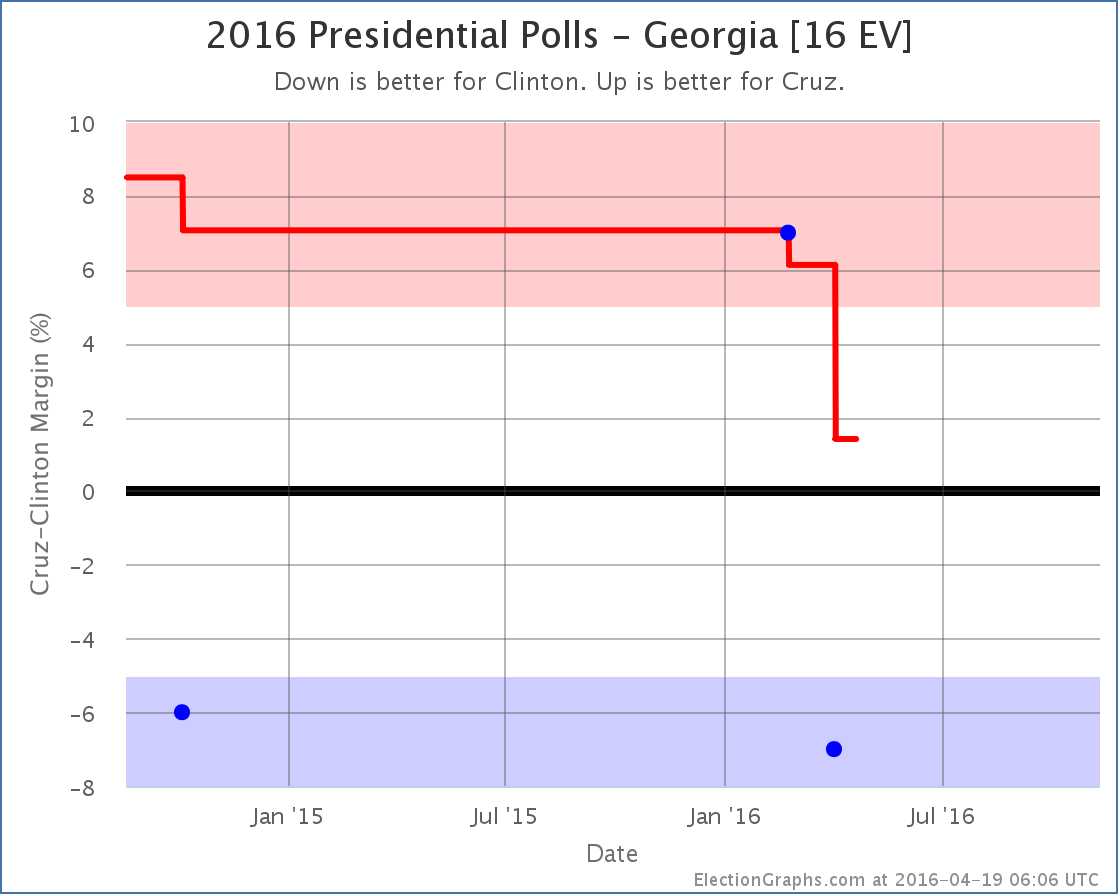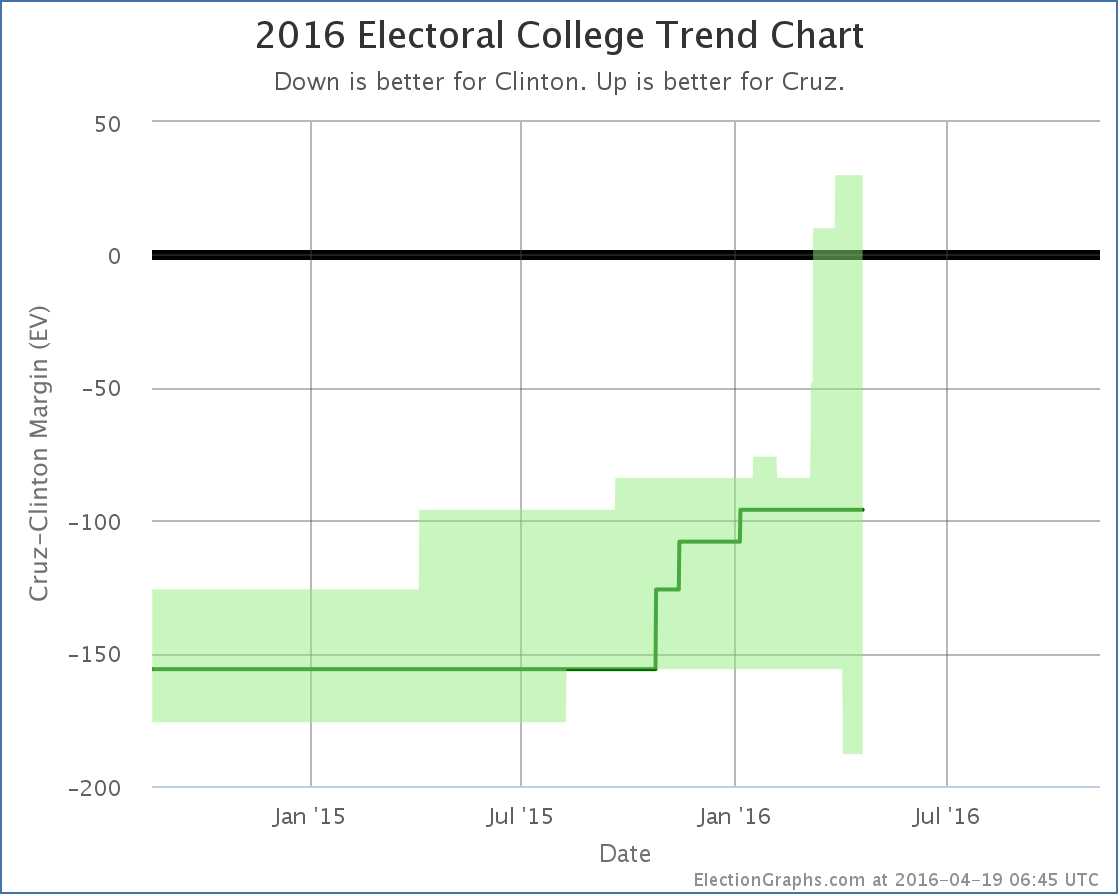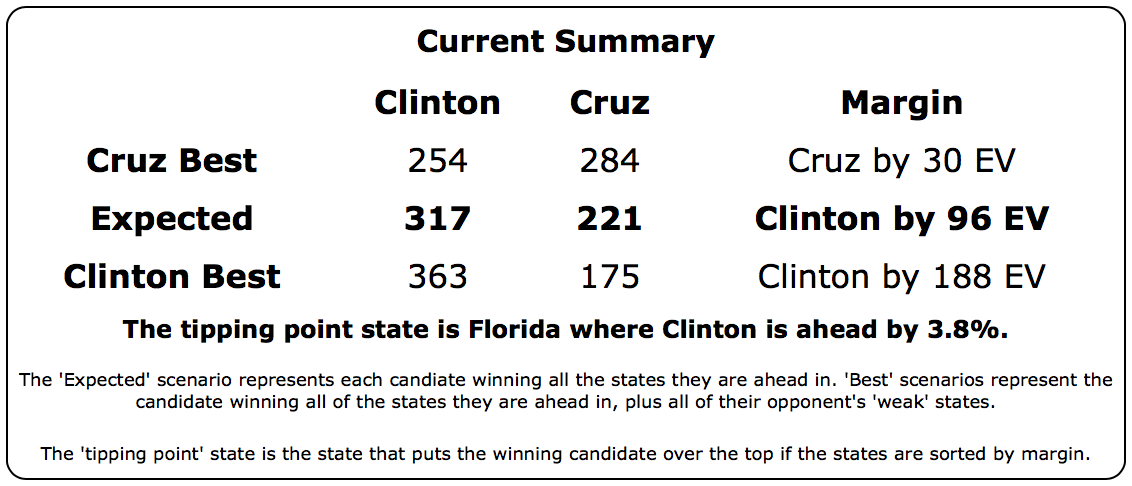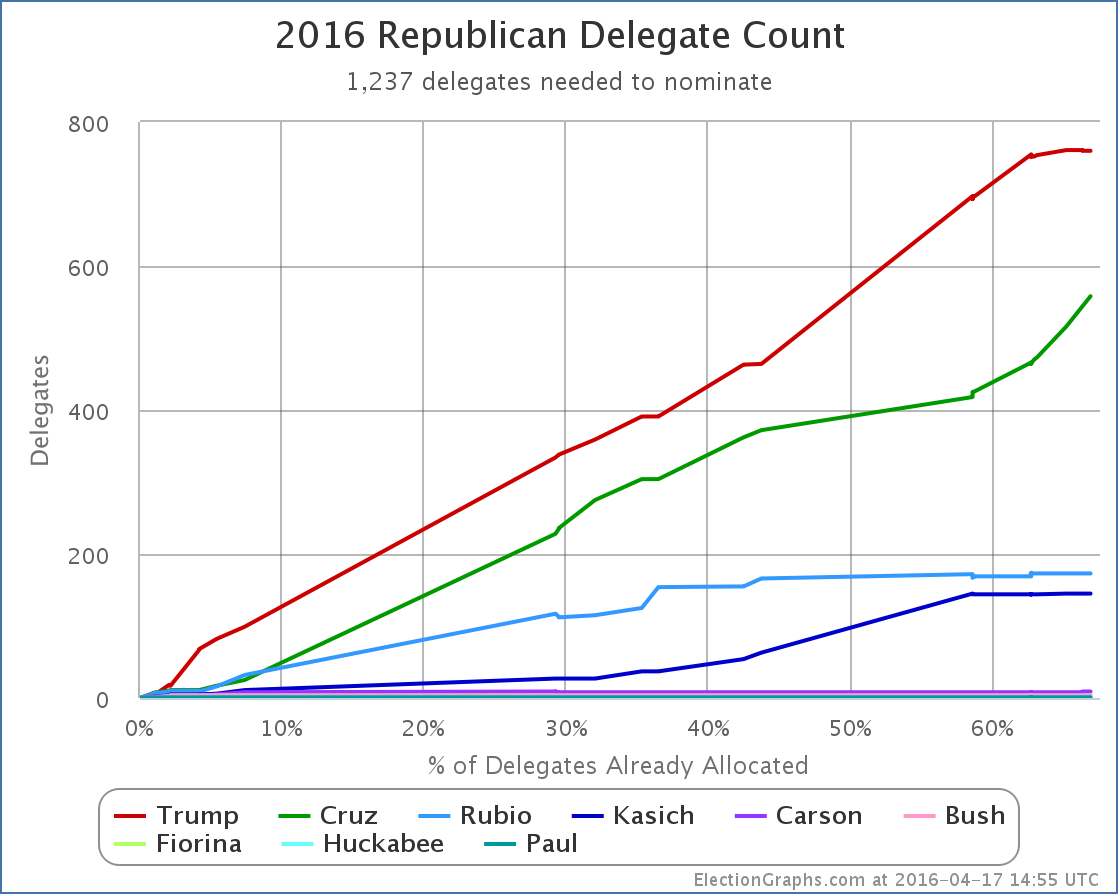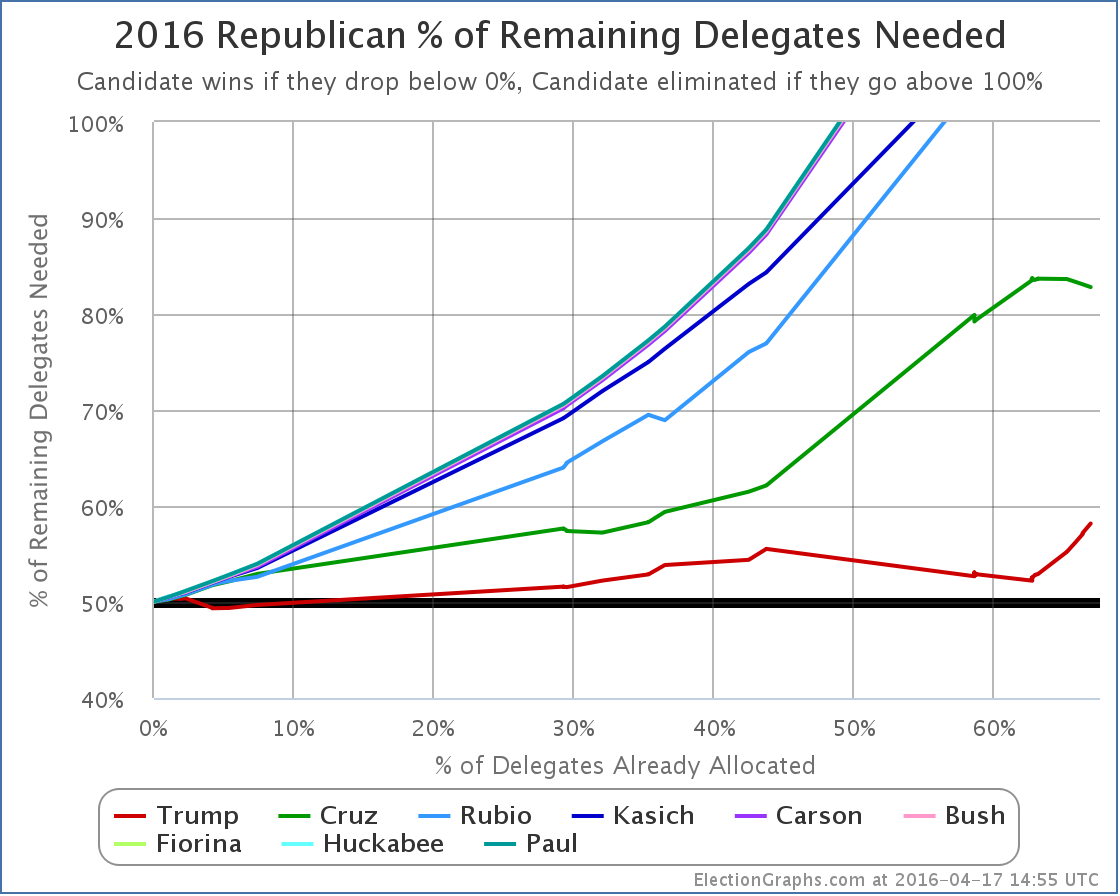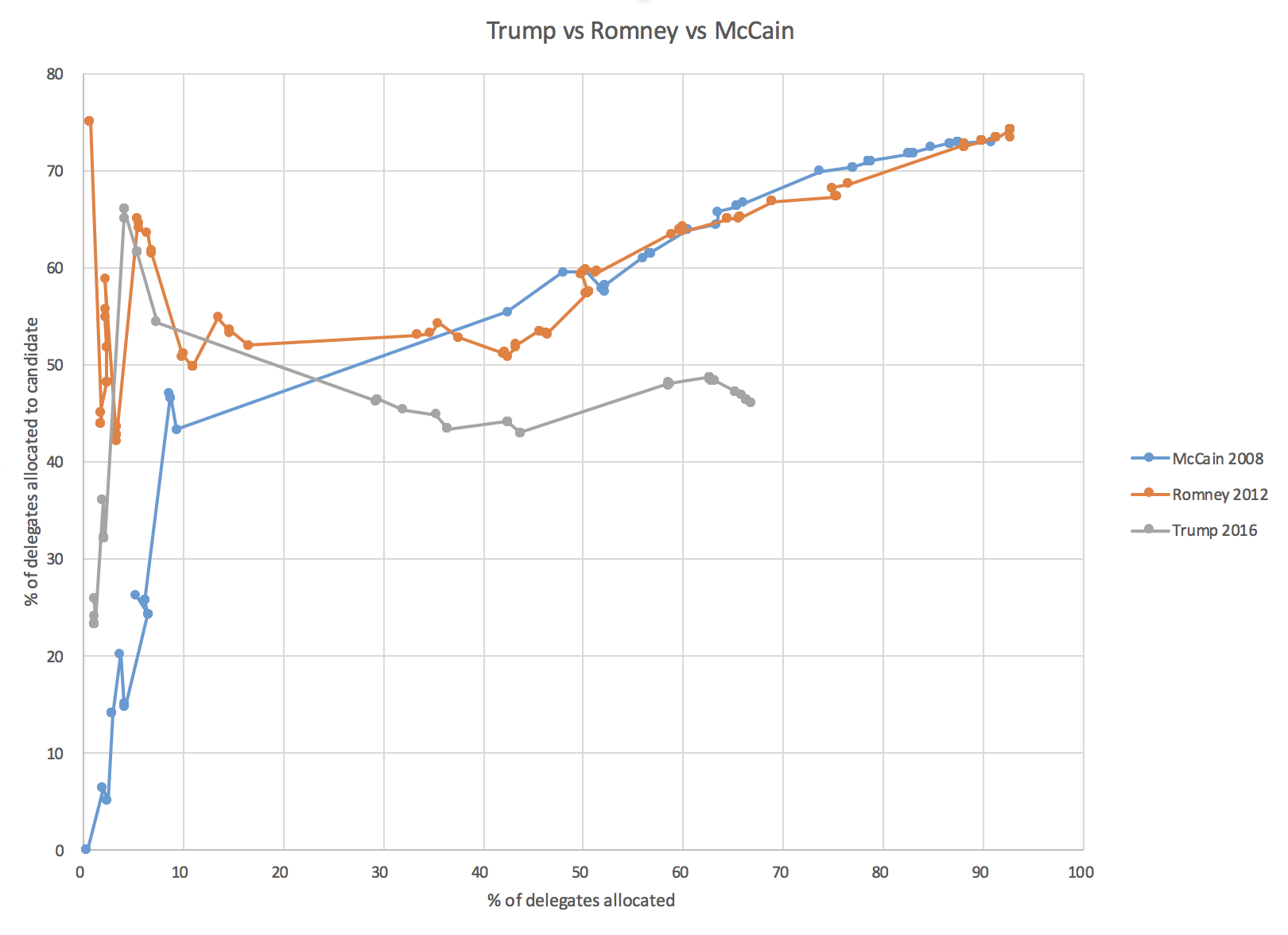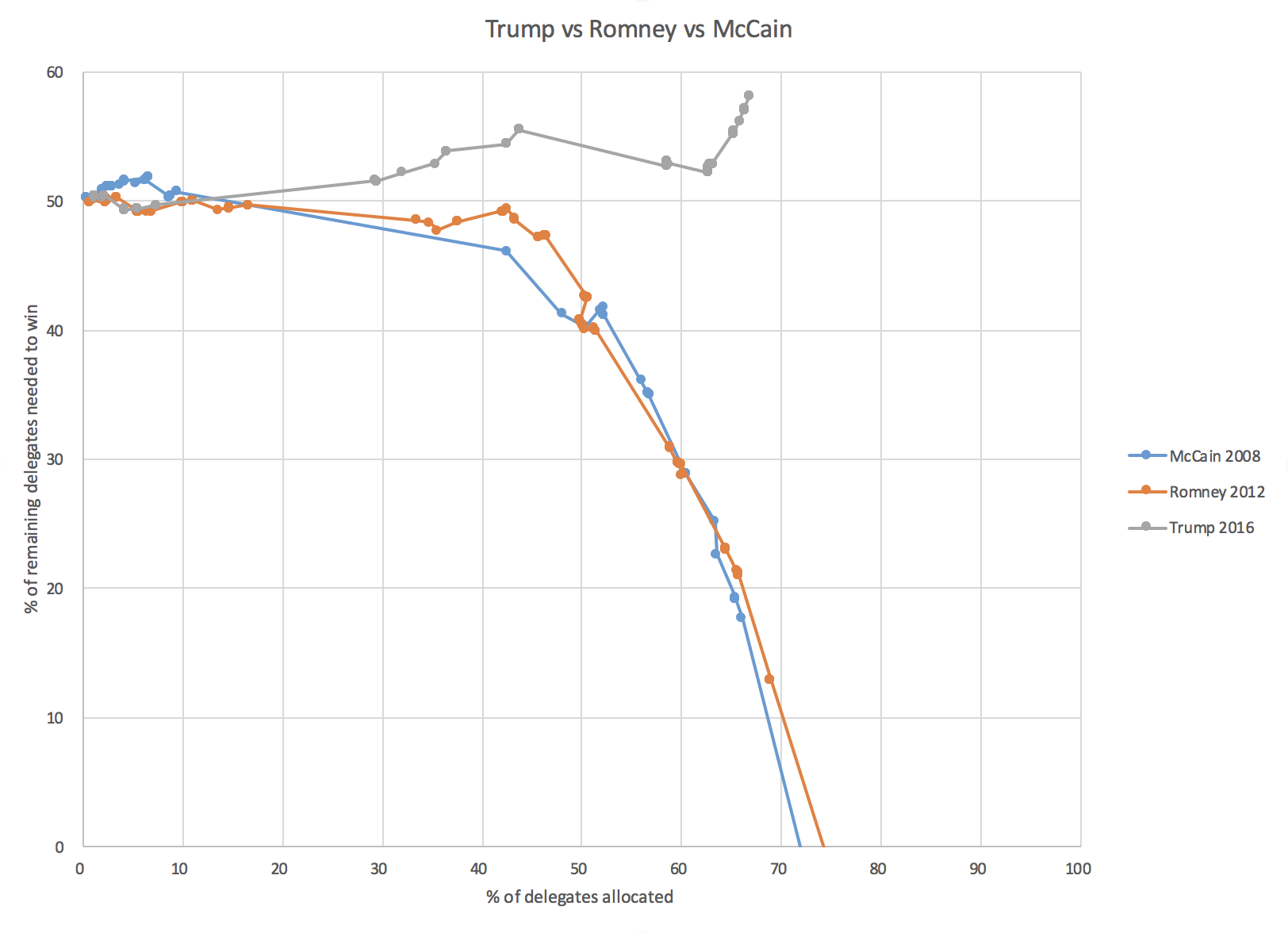Since the last update on the Electoral College picture there have been polls in Wisconsin, California (x2), Mississippi, Virginia, Pennsylvania (x2), Maryland (x2), New York (x5), Connecticut, Massachusetts, New Jersey, Utah, and Georgia. The only one of these that resulted in a change in the overall 2016 electoral college summary was the poll in Georgia.
That poll was bad news for both Trump and Cruz. It showed both of them losing to Clinton. We don’t pay attention to individual polls of course, we look at the averages. But in both cases adding in this new poll drops the Republican lead in Georgia to less than 5%, which means that Georgia may be in play for Clinton this year. Georgia hasn’t been blue since 24 years ago when it voted for another Clinton in 1992.
Lets look specifically at the two match-ups here:
Clinton vs Trump
Georgia has been sparsely polled. It was not particularly expected to be a swing state. For Clinton vs Trump we only have three polls and so are still using the 2012 and 2008 election results to fill in the poll average. This new poll represents a really large move from the others as well, so there is a potential that future polls will show it to be an outlier.
But with those caveats, we now only have a 3.6% lead for Trump, which is close enough that we include picking up Georgia in Clinton’s “best case”.
Clinton’s best case, where she wins not only the states she is ahead in, but also picks up the states where she is currently less than 5% behind… that would currently be Colorado (1.9% Trump lead), Georgia (3.6% Trump lead), and Missouri (4.7% Trump lead)… is now a 208 electoral vote win. The last time the margin was that large was when Bill Clinton beat Bob Dole with a 220 electoral vote margin in 1996.
Keep in mind however that this is Clinton’s best case. The “expected” result is a narrower 138 electoral vote win. That is in between Obama’s win in 2012 (126 electoral votes) and his win in 2008 (192 electoral votes).
Trump’s best case, where he picks up all six of the weak Clinton states (North Carolina, Iowa, Florida, Ohio, Nevada, and Minnesota) is still to pull out a 30 electoral vote win.
The downward trend in Trump’s general election polling that started in January continues. The questions are “How far does he fall before he bottoms?” and “Can Trump rebound after that?”.
Assuming he is the nominee of course.
Time to look at the other contender:
Clinton vs Cruz
Like Clinton vs Trump, there have only been three polls of Clinton vs Cruz, but in this case one of the three is much older. We’re still filling the average with the 2012 and 2008 election results as well.
With the new poll, Cruz’s lead in Georgia is down to only 1.4%. Unlike the Clinton vs Cruz case we actually have two polls showing a similar result, so the case that this is just an outlier is a little weaker.
In any case, the average now shows Georgia as a close state.
Clinton’s best case here improves to winning by 188 electoral votes.
Comparing Cruz and Trump, Cruz is doing better in the tipping point metric, in his worst case, and his expected case. He and Trump tie in their best case, with the narrow 30 electoral vote win.
Cruz’s trend has also generally been an improving trend. Today’s change is actually notable for being only the third decline for Cruz in my summary in the last year.
This decline then brings up the opposite question than the one we asked about Trump. Rather than asking when we will reach a bottom, with Cruz the question is when he will peak.
203.4 days until the general election polls start to close.
Note: This post is an update based on the data on ElectionGraphs.com. Election Graphs tracks both a poll based estimate of the Electoral College and a numbers based look at the Delegate Races. All of the charts and graphs seen in this post are from that site. Additional graphs, charts and raw data can be found there. All charts above are clickable to go to the current version of the detail page the chart is from, which may contain more up to date information than the snapshots on this page, which were current as of the time of this post. Follow @ElectionGraphs on Twitter or like Election Graphs on Facebook to see announcements of updates or to join the conversation. For those interested in individual general election poll updates, follow @ElecCollPolls on Twitter for all the polls as they are added.
